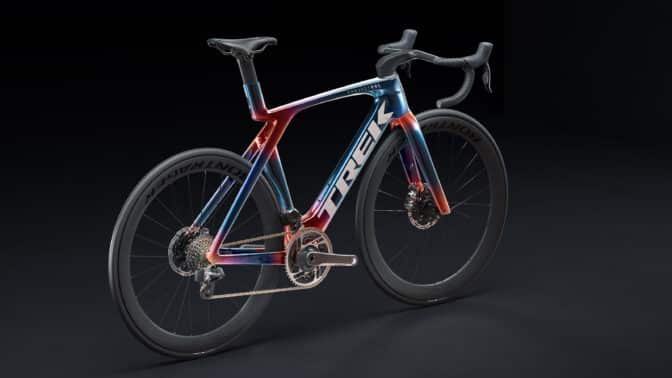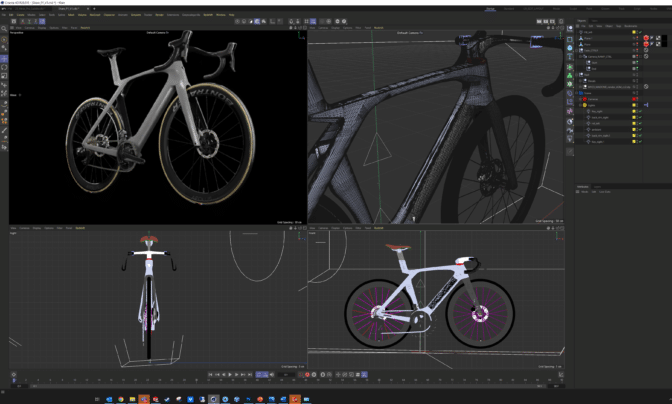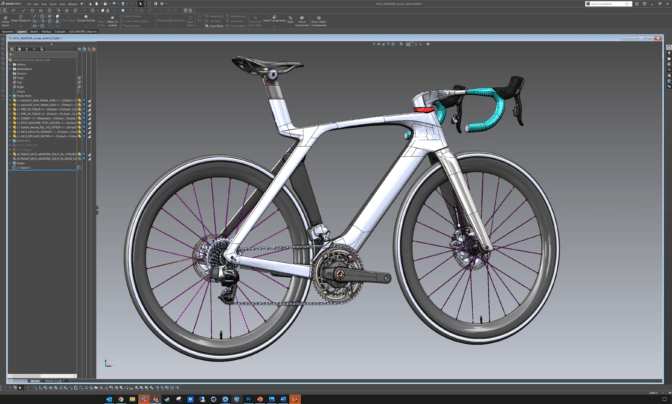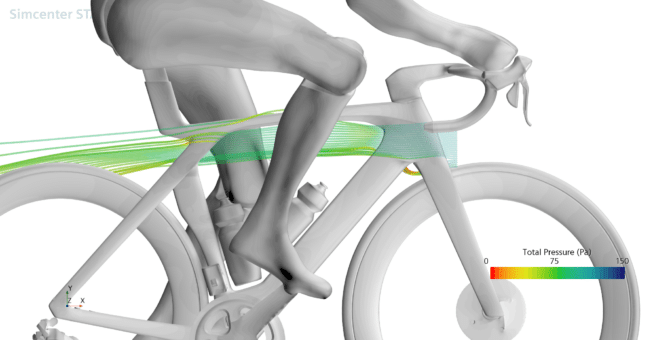NVIDIA RTX is spinning new cycles for designs. Trek Bicycle is using GPUs to bring design concepts to life.
The Wisconsin-based company, one of the largest bicycle manufacturers in the world, aims to create bikes with the highest-quality craftsmanship. With its new partner Lidl, an international retailer chain, Trek Bicycle also owns a cycling team, now called Lidl-Trek. The team is competing in the annual Tour de France stage race on Trek Bicycle’s flagship lineup, which includes the Emonda, Madone and Speed Concept. Many of the team’s accessories and equipment, such as the wheels and road race helmets, were also designed at Trek.
Bicycle design involves complex physics — and a key challenge is balancing aerodynamic efficiency with comfort and ride quality. To address this, the team at Trek is using NVIDIA A100 Tensor Core GPUs to run high-fidelity computational fluid dynamics (CFD) simulations, setting new benchmarks for aerodynamics in a bicycle that’s also comfortable to ride and handles smoothly.
The designers and engineers are further enhancing their workflows using NVIDIA RTX technology in Dell Precision workstations, including the NVIDIA RTX A5500 GPU, as well as a Dell Precision 7920 running dual RTX A6000 GPUs.
Visualizing Bicycle Designs in Real Time
To kick off the product design process, the team starts with user research to generate early design concepts and develop a range of ideas. Then, they build prototypes and iterate the design as needed.
To improve performance, the bikes need to feel a certain way, whether riders are taking it on the road or the trail. So Trek spends a lot of time with athletes to figure out where to make critical changes, including tweaks to geometry and the flexibility of the frame and taking the edge off of bumps.
The designers use graphics-intensive applications tools for their computer-aided design workflows, including Adobe Substance 3D, Cinema 4D, KeyShot, Redshift and SOLIDWORKS. For CFD simulations, the Trek Performance Research team uses Simcenter STAR-CCM+ from Siemens Digital Industries Software to take advantage of the GPU processing capabilities.
NVIDIA RTX GPUs provided Trek with a giant leap forward for design and engineering. The visualization team can easily tap into RTX technology to iterate quicker and show more options in designs. They can also use Cinema 4D and Redshift with RTX to produce high-quality renderings and even to visualize different designs in near real time.
Michael Hammond, the lead for digital visual communications at Trek Bicycle, explains the importance of having time for iterations. “The faster we can render an image or animation, the faster we can improve it,” he said. “But at the same time, we don’t want to lose details or spend time recreating models.”
With the help of the RTX A5500, Trek’s digital visual team can push past creative limits and reach the final design much faster. “On average, the RTX GPU performs 12x faster than our network rendering, which is on CPU cores,” said Hammond. “For a render that takes about two hours to complete on our network, it only takes around 10-12 minutes on the RTX A5500 — that means I can do 12x the iterations, which leads to better quality rendering and animation in less time.”
Accelerating CFD Simulations
Over the past decade, adoption of CFD has grown as a critical tool for engineers and equipment designers because it allows them to gain better insights into the behavior of their designs. But CFD is more than an analysis tool — it’s used to make improvements without having to resort to time-consuming and expensive physical testing for every design. This is why Trek has integrated CFD into its product development workflows.
The aerodynamics team at Trek relies on Simcenter STAR-CCM+ to optimize the performance of each bike. To provide a comfortable ride and smooth handling while achieving the best aerodynamic performance, the Trek engineers designed the latest generation Madone to use IsoFlow, a unique feature designed to increase rider comfort while reducing drag.
The Simcenter STAR-CCM+ simulations benefit from the speed of accelerated GPU computing, and it enabled the engineers to cut down simulation runtimes by 85 days, as they could run CFD simulations 4-5x faster on NVIDIA A100 GPUs compared to their 128-core CPU-based HPC server.
The team can also analyze more complex physics in CFD to better understand how the air is moving in real-world unsteady conditions.
“Now that we can run higher fidelity and more accurate simulations and still meet deadlines, we are able to reduce wind tunnel testing time for significant cost savings,” said John Davis, the aerodynamics lead at Trek Bicycle. “Within the first two months of running CFD on our GPUs, we were able to cancel a planned wind tunnel test due to the increased confidence we had in simulation results.”
Learn more about Trek Bicycle and GPU-accelerated Simcenter STAR-CCM+.
And join us at SIGGRAPH, which runs from Aug. 6-10, to see the latest technologies shaping the future of design and simulation.



